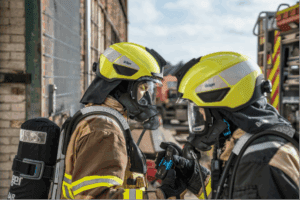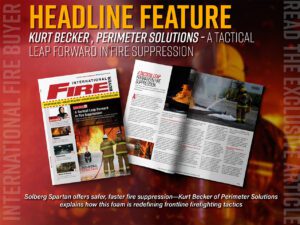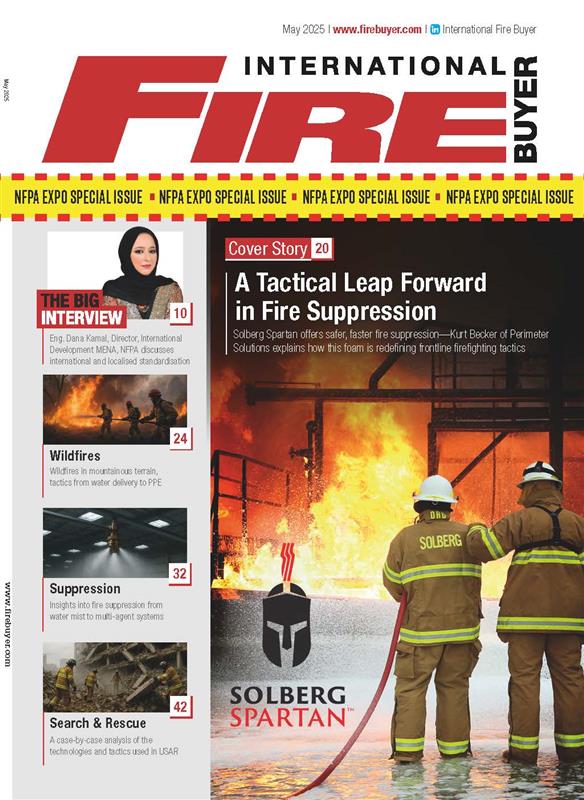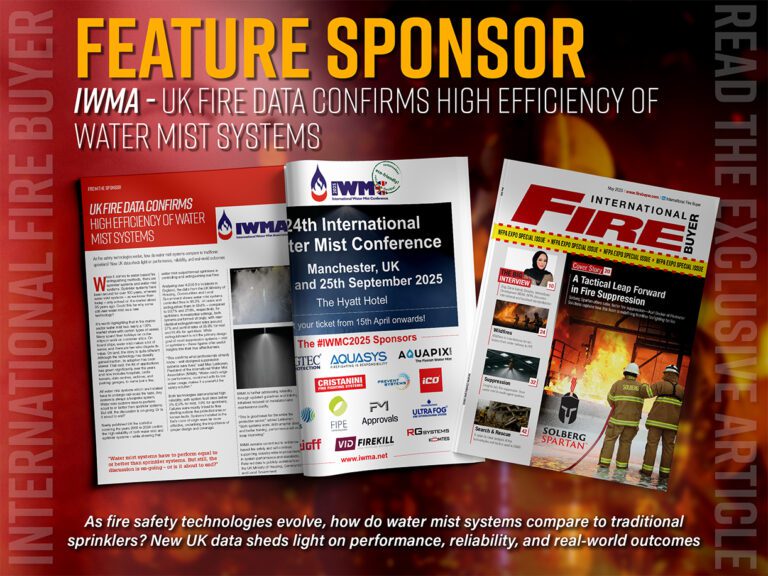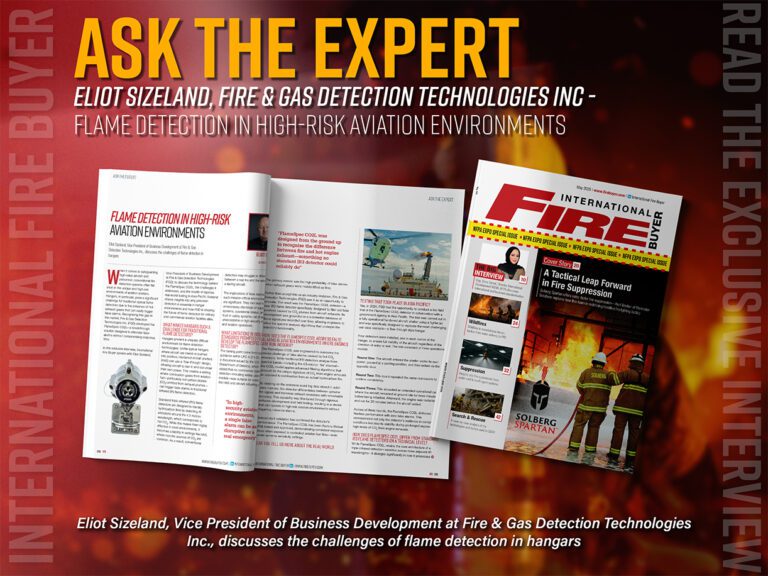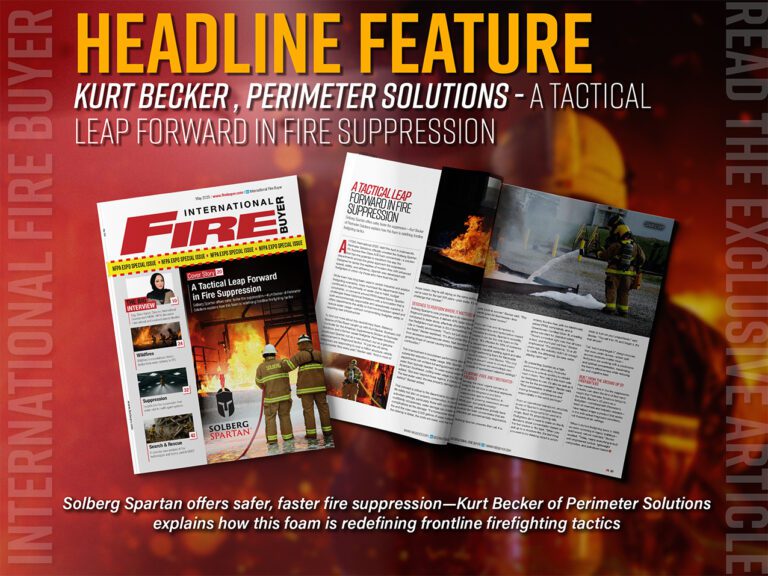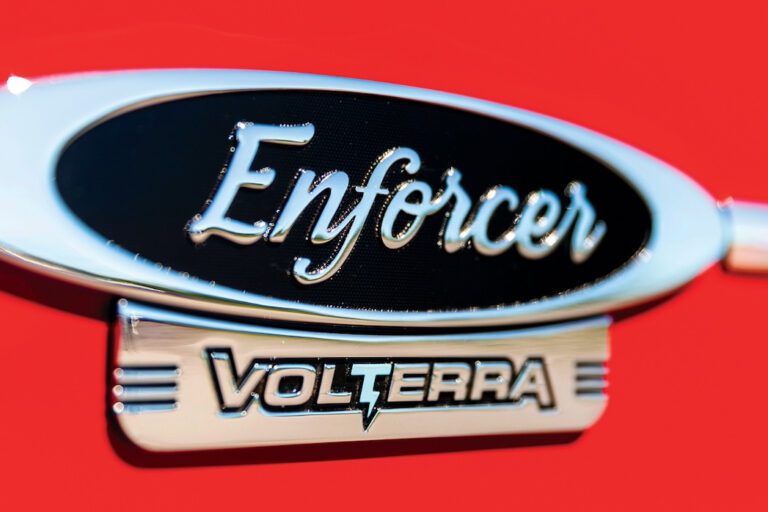PPE: Exploring 2024 trends that will remain at the forefront for 2025, focusing on advanced materials, smart technologies, ergonomics, sustainability, and customisation for enhanced safety, writes Hannah Larvin of Fire Buyer
Firefighting is one of the most hazardous professions, requiring exceptional physical endurance and mental resilience. Personal protective equipment (PPE) plays a pivotal role in ensuring the safety of firefighters while enabling them to operate effectively in extreme conditions. As 2024 progresses, the landscape of firefighter PPE is being reshaped by advancements in material technology, ergonomics, smart systems, and sustainability. These innovations are not only enhancing protection but also addressing operational challenges that are becoming more complex due to environmental and industrial changes.
Advances in Material Technologies
The foundation of firefighter PPE lies in its materials. Over recent years, there has been a significant shift towards high-performance fabrics that offer improved thermal protection, durability, and comfort. In 2024, these advancements continue to be a driving force behind the evolution of protective gear.
Lenzing fibres, renowned for their flame-resistant properties, remain a cornerstone of many manufacturers’ designs. These fibres are not only highly resistant to extreme heat but also breathable, which is crucial for reducing heat stress during prolonged operations. By incorporating Lenzing fibres into multi-layered garments, manufacturers can ensure that firefighters are shielded from thermal hazards without compromising mobility or comfort.
Lakeland Industries is another example of how material science is shaping modern PPE. The company has developed protective fabrics that integrate thermal and moisture barriers, creating a balance between external defence and internal comfort. These fabrics are designed to repel water and hazardous substances while allowing perspiration to escape, which helps to maintain firefighters’ focus and stamina during challenging operations.
Durability is also a critical factor. Protective garments must withstand rigorous use in harsh conditions, from structural fires to wildfires. Companies like BOCHE are addressing this by incorporating abrasion-resistant outer layers, ensuring that PPE can endure repeated exposure to sharp objects and rough surfaces.
Ergonomics and Mobility
Firefighting is a physically demanding job that requires gear capable of supporting dynamic movement without hindrance. PPE manufacturers are focusing on improving ergonomics and mobility to reduce fatigue and enhance operational efficiency.
Fire Dex and Kivanc Group have been at the forefront of this trend, designing turnout gear with articulated joints, stretch panels, and optimised fit. These features enable firefighters to move more freely, whether climbing ladders, crawling through confined spaces, or operating equipment. Lighter weight designs are also becoming a priority, as they reduce the strain on firefighters during extended missions.
Fit is another critical area of improvement. Ill-fitting PPE can lead to discomfort and even safety risks. To address this, manufacturers are offering customisation options that allow fire brigades to order gear tailored to individual firefighters. Gender-specific designs are also becoming more prevalent, ensuring that female firefighters have access to PPE that meets their unique needs. By prioritising inclusivity, companies such as Kivanc Group are setting new standards for comfort and functionality.
Integration of Smart Technologies
Technological integration in firefighter PPE has become a key trend in 2024, with smart systems providing real-time data to enhance safety and decision-making during emergencies.
MSA Safety has been pushing connected solutions to the forefront of the industry, offering helmets equipped with built-in communication systems, thermal imaging cameras, and environmental sensors. These technologies allow firefighters to assess hazards quickly and maintain situational awareness, even in low-visibility conditions. Additionally, sensors embedded in PPE, such as those developed by ATI-Fire, monitor physiological data like heart rate, body temperature, and exposure to toxic gases. This information is relayed to incident commanders, enabling them to make informed decisions and intervene if a firefighter’s health is at risk.
Smart PPE is not just about monitoring; it is also about enhancing operational capabilities. For instance, thermal imaging embedded in helmets helps firefighters locate hotspots or victims in smoke-filled environments, significantly improving response times. As these technologies evolve, the potential for integration with broader systems, such as building monitoring or drone surveillance, is becoming increasingly apparent….
To read more exclusive articles and latest news, see our last issue here.
Never miss a story… Follow us on:
LinkedIn: International Fire Buyer
Twitter (X): @Firebuyer
YouTube: @FireBuyerTV
Media Contact
Rebecca Spayne Managing Editor, International Fire Buyer
Tel: +44 (0) 1622 823 920
Email: [email protected]










